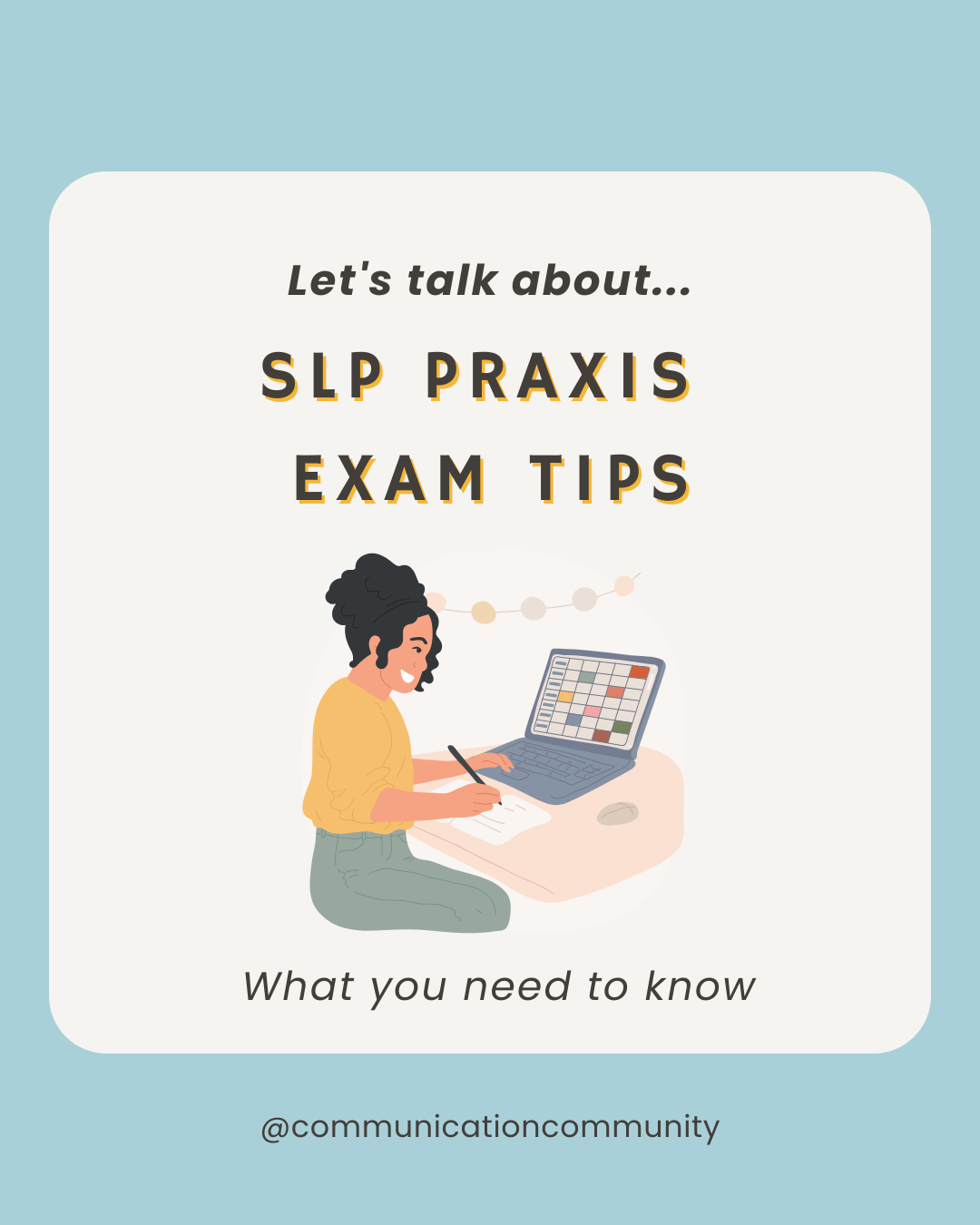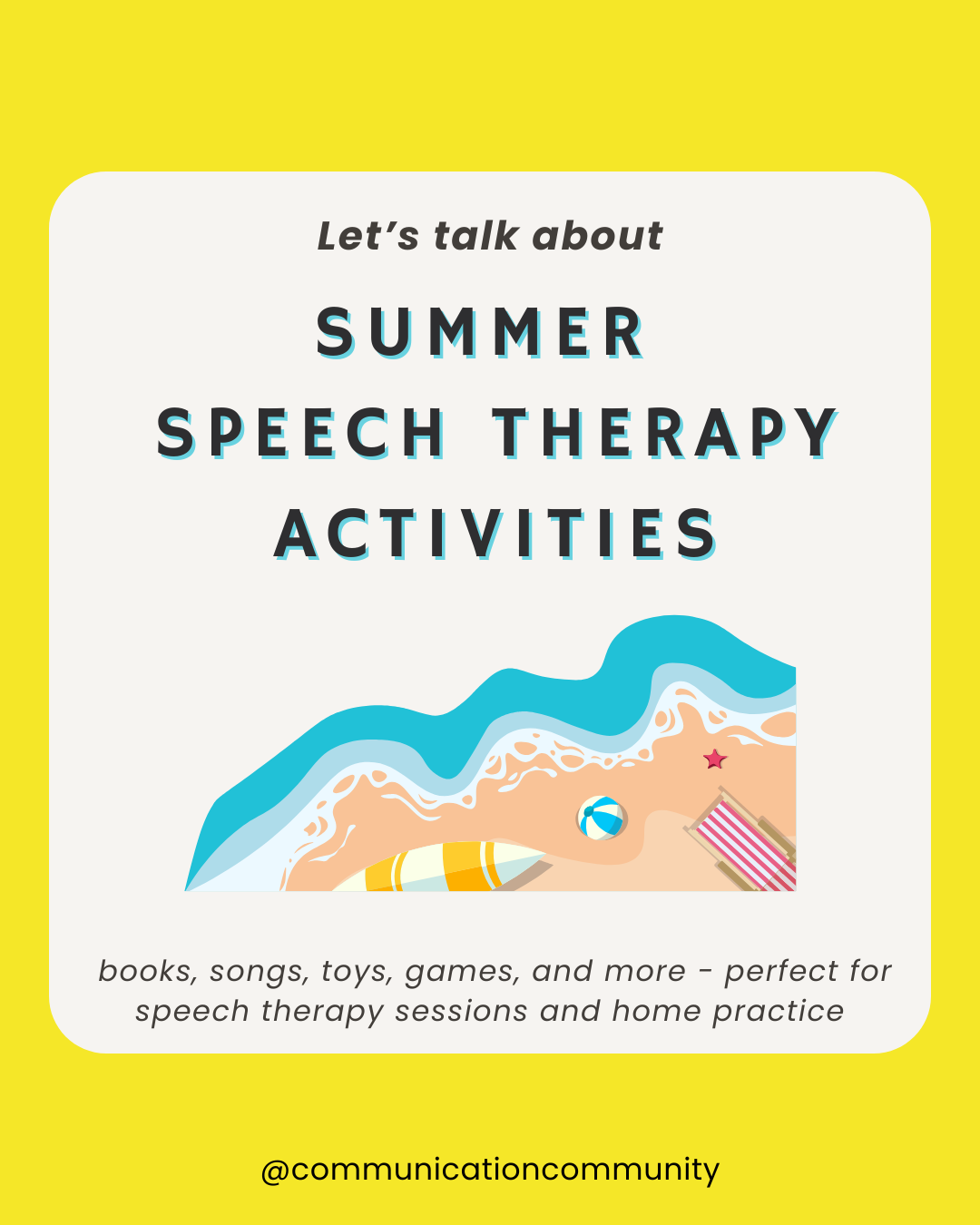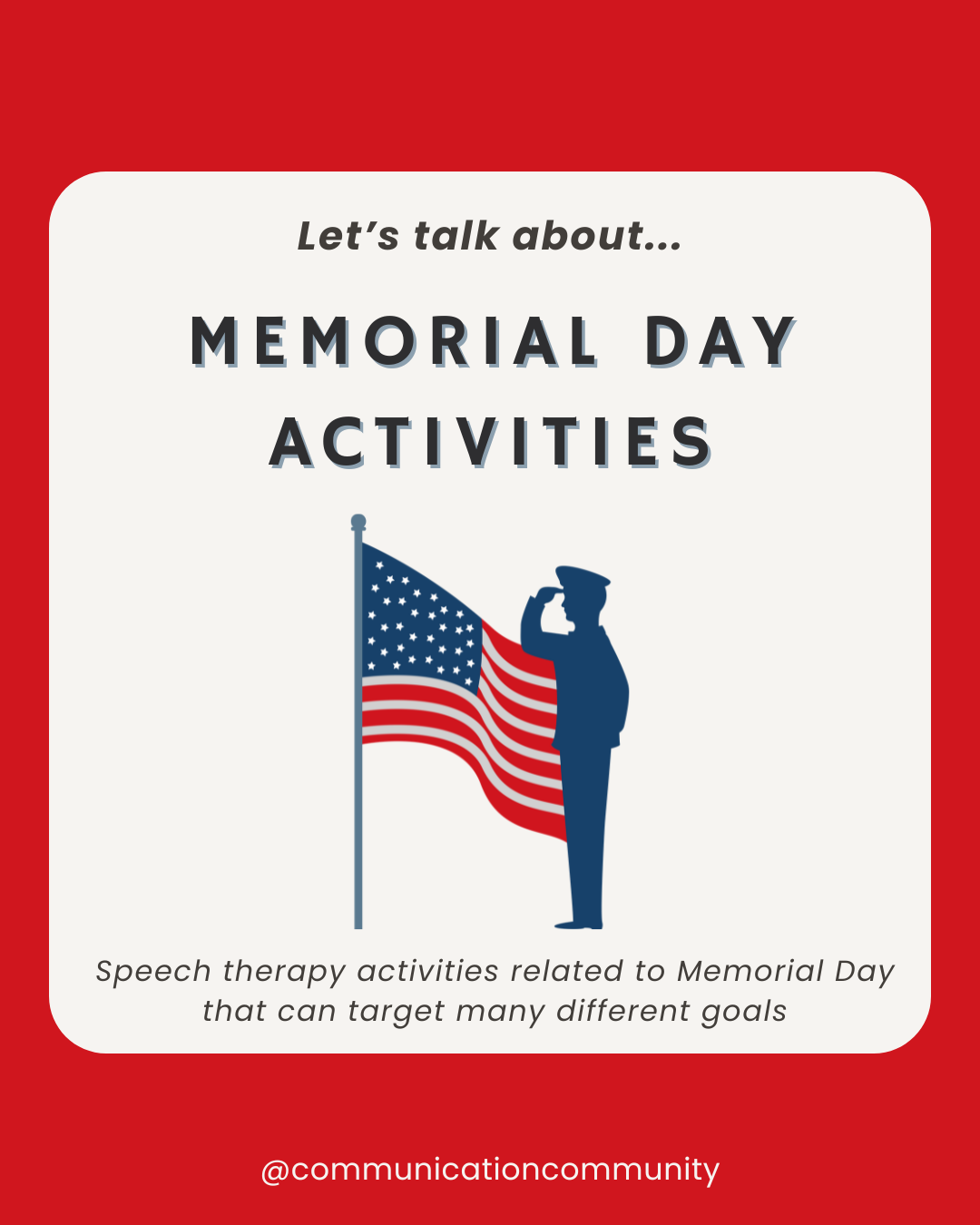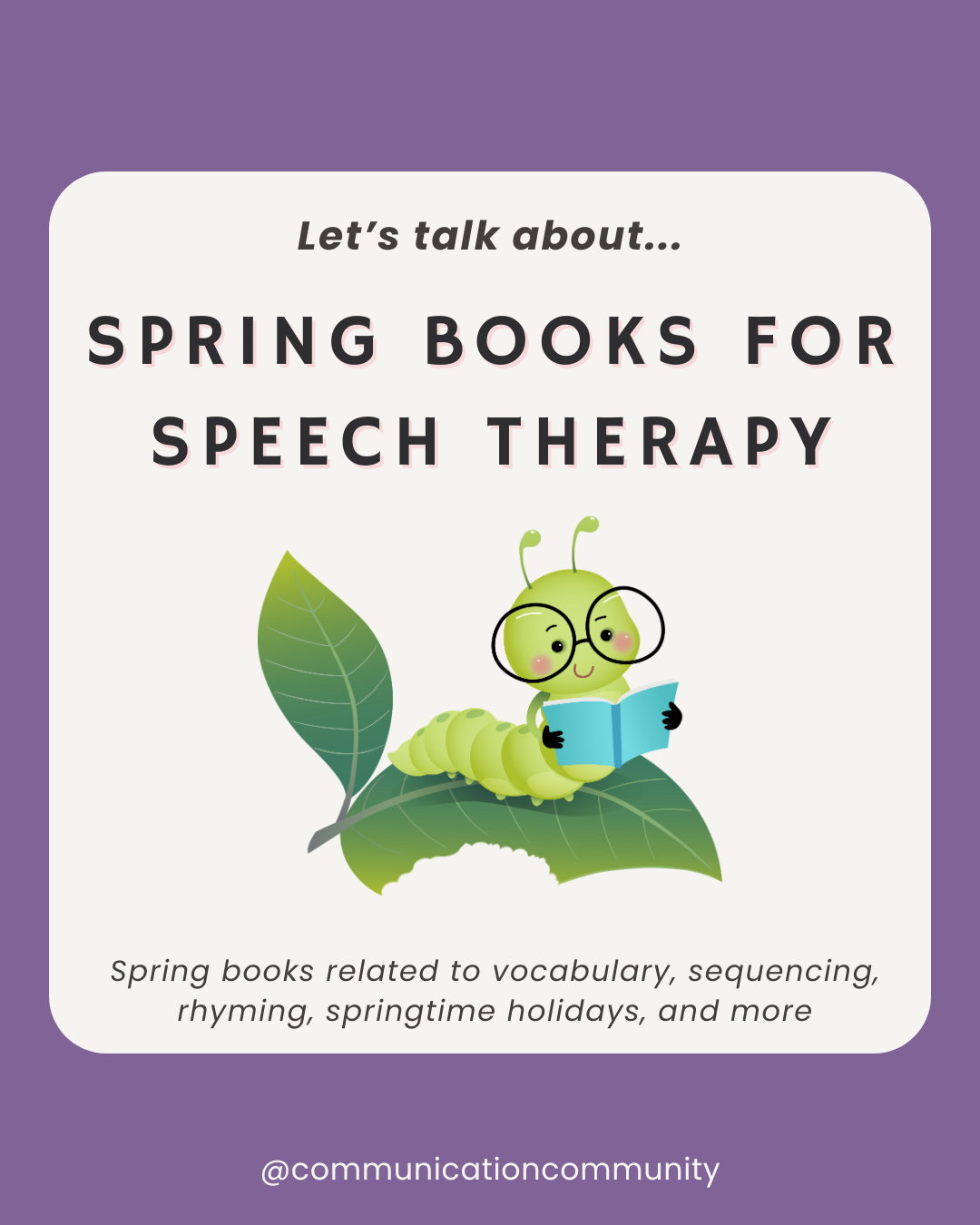What is National Speech-Language-Hearing Month?
National Speech-Language-Hearing Month (formerly known as Better Hearing and Speech Month) is recognized every May by the American Speech-Language-Hearing Association (ASHA). The purpose of it is to raise awareness about communication disorders and differences and the role speech-language pathologists and audiologists play in supporting individuals with communication needs.
The field of speech-language pathology has a broad scope; speech-language pathologists (SLPs) are trained in many areas (see the Big 9 below). SLPs can also work with a diverse population and in a wide variety of settings.
Audiologists also support individuals through the management, assessment, and treatment of hearing and balance disorders.
SLPs and audiologists often work together closely with individuals with hearing impairments and resulting communication needs.
ASHA provides a number of resources about National Speech-Language-Hearing Month, including developmental milestones checklists, tips for communicating with adults who have a speech or language disorder, and articles for families. Resources are available in Spanish as well!
My Speech-Language Pathology Journey
I decided that when I was a freshman in college I wanted to (try to) be an SLP. This was after I attended a seminar about the undergraduate major, Communication Sciences and Disorders, and the different avenues that you could take after receiving that education; Speech-Language Pathology or Audiology, which required more advanced degrees.
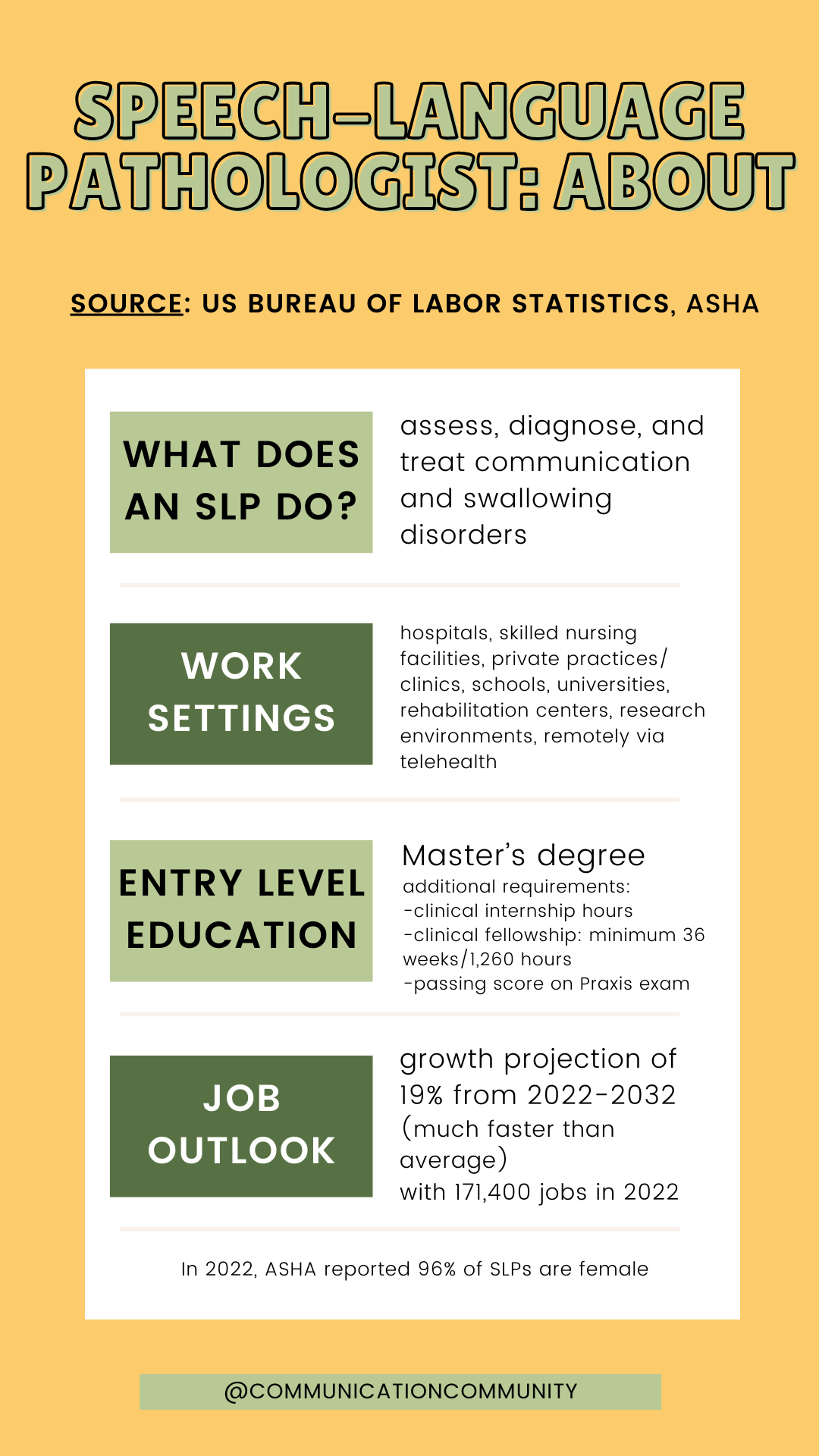
Fast forward four years, and I was 22, just having earned my undergraduate degree, living in Boston as a grad student while most of my other friends had real-life jobs. Let me tell you how some of my small talk conversations would go during this time…
Random people:
“You’re getting your degree in speech-language pathology? Cool. So what can you do with that?”
“Oh, you want to be a speech pathologist? Is that like for people with speech impediments?”
“Is that the same thing as a speech teacher?”
“Oh! My sister had speech therapy as a kid because she couldn’t say her Rs. They got to play board games.”
Me:
“Well actually, [*insert long spiel about the Big 9 and an SLP’s scope of practice*].”
I was genuinely surprised by how many people I spoke to who did not know what an SLP did. However, it did make me think back to that freshman year of college when I wasn’t even sure what an SLP did…I was aware that they helped people though. So, let’s talk about how:
Generally speaking, SLPs provide clinical care for individuals with communication and swallowing disorders. They can work with children and/or adults in many different types of settings. For residents of the United States, The American Speech-Language-Hearing Association (ASHA) is the general governing body that outlines an SLP’s scope of practice (aka - what in the world we do). ASHA has outlined our scope of practice into what we call “The Big 9,” which are 9 general areas of communication/swallowing that SLPs have the ability to assess, diagnose, and treat.
SLPs provide clinical care for individuals with communication and swallowing disorders.
The Big 9 of Speech-Language Pathology: What SLPs are Trained to Do
According to ASHA, the Big 9 includes:
1.Articulation
This refers to how individuals produce speech sounds. For example, an individual with a lisp or someone who has trouble saying the “r” sound may see an SLP for treatment to improve their ability to say speech sounds correctly.
2. Fluency
This refers to the way words and phrases flow together when we speak. For example, an individual who stutters may see an SLP to work on strategies to feel more comfortable speaking or to make stuttering easier (e.g., fluency shaping strategies).
3. Voice and resonance (including respiration and phonation)
This refers to the pitch, loudness, and quality of speech. For example, an individual with vocal nodules may see an SLP for treatment to reduce abnormal pitch or vocal abuse.
4. Receptive and expressive language
This refers to how individuals understand or express language. For example, an individual who has difficulty expressing their thoughts clearly may work with an SLP to increase this skill.
5. Hearing
This refers to individuals with hearing impairments and the impact on speech and language. For example, a child with a cochlear implant may see an SLP to work on strategies for improving their communication with others.
6. Swallowing
This refers to the oral and/or pharyngeal aspects of swallowing. For example, an SLP would assess and provide treatment for an individual who has experienced a stroke and was diagnosed with dysphagia.
7. Cognitive aspects of communication
This refers to attention, memory, sequencing, problem-solving, executive functioning, etc. For example, an individual with a developmental disability may experience difficulty sequencing, or understanding the steps of, basic tasks (e.g., brushing teeth) and may require specialized support to learn these kinds of skills.
8. Social aspects of communication (pragmatic language)
This refers to when, how, and why we use speech and language to communicate. For example, an individual with autism may present with communication differences that impact their ability to effectively communicate their wants and needs. They can work with an SLP to explore different communication modalities and learn ways to communicate their thoughts and ideas.
9.Communication modalities
This refers to different communication techniques, including spoken words, signs, and assistive technology (AT). Augmentative and alternative communication (AAC) is a way to enhance one’s communication, i.e., augment, as well as serve as an alternative means of communication: the back-and-forth exchange of messages. For example, an individual who has difficulty communicating verbally may work with an SLP to learn to use an AAC system (e.g., a speech-generating device) to increase their communication abilities.
Where Do SLPs Work?
- Hospitals
- Skilled nursing facilities (nursing homes)
- Private practices/clinics
- Schools
- Higher level education (professors and/or within university clinics)
- Rehabilitation centers
- Research environments
- From home via telepractice
Above, you see all the areas that SLPs have the skills and training to treat. However, like many health-related professions, many SLPs have “specialties” or preferred treatment areas and focus on that specific domain. This can also affect the setting an SLP chooses to work. For example, someone working in an adult hospital setting may exclusively treat cognitive areas of communication and dysphagia, while another SLP in a K-5 school setting may focus more on articulation, stuttering, receptive and expressive language, and social aspects of communication.
Other SLPs (like us) work in a combination of settings as well as manage a small business!
National Speech-Language-Hearing Month is a great opportunity to recognize all that SLPs (and audiologists) do to support individuals with communication needs.
Find More Information and Resources
Within our blog, we have blog posts on many topics related to the field of speech-language pathology, including information on specific disorders, goal banks/goal-writing assistance, and therapy activity ideas. We also have an online Premium Community, where we share a TON of resources to assist SLPs work more effectively and efficiently!
Get a taste of it when you join our free Open Community.

Citations/further resources:
American Speech-Language-Hearing Association. (2016). Scope of Practice in SpeechLanguage Pathology [Scope of Practice]. Available from www.asha.org/policy/.
American Speech-Language-Hearing Association. (n.d.). SLP Education Summit Glossary. American Speech-Language-Hearing Association. https://www.asha.org/events/slp-summit-glossary/
American Speech-Language-Hearing Association. (n.d.). About Speech-Language Pathology. Speech-Language Pathologists. https://www.asha.org/students/speech-language-pathologists/
ASHA Wire. (2019, July 1). A demographic snapshot of SLPs: Data highlight some key characteristics of ASHA’s SLP members.: The ASHA leader: Vol 24, no 7. https://leader.pubs.asha.org/doi/10.1044/leader.AAG.24072019.32
U.S. Bureau of Labor Statistics. (2024, April 17). Speech-language pathologists : Occupational outlook handbook. U.S. Bureau of Labor Statistics. https://www.bls.gov/ooh/healthcare/speech-language-pathologists.htm

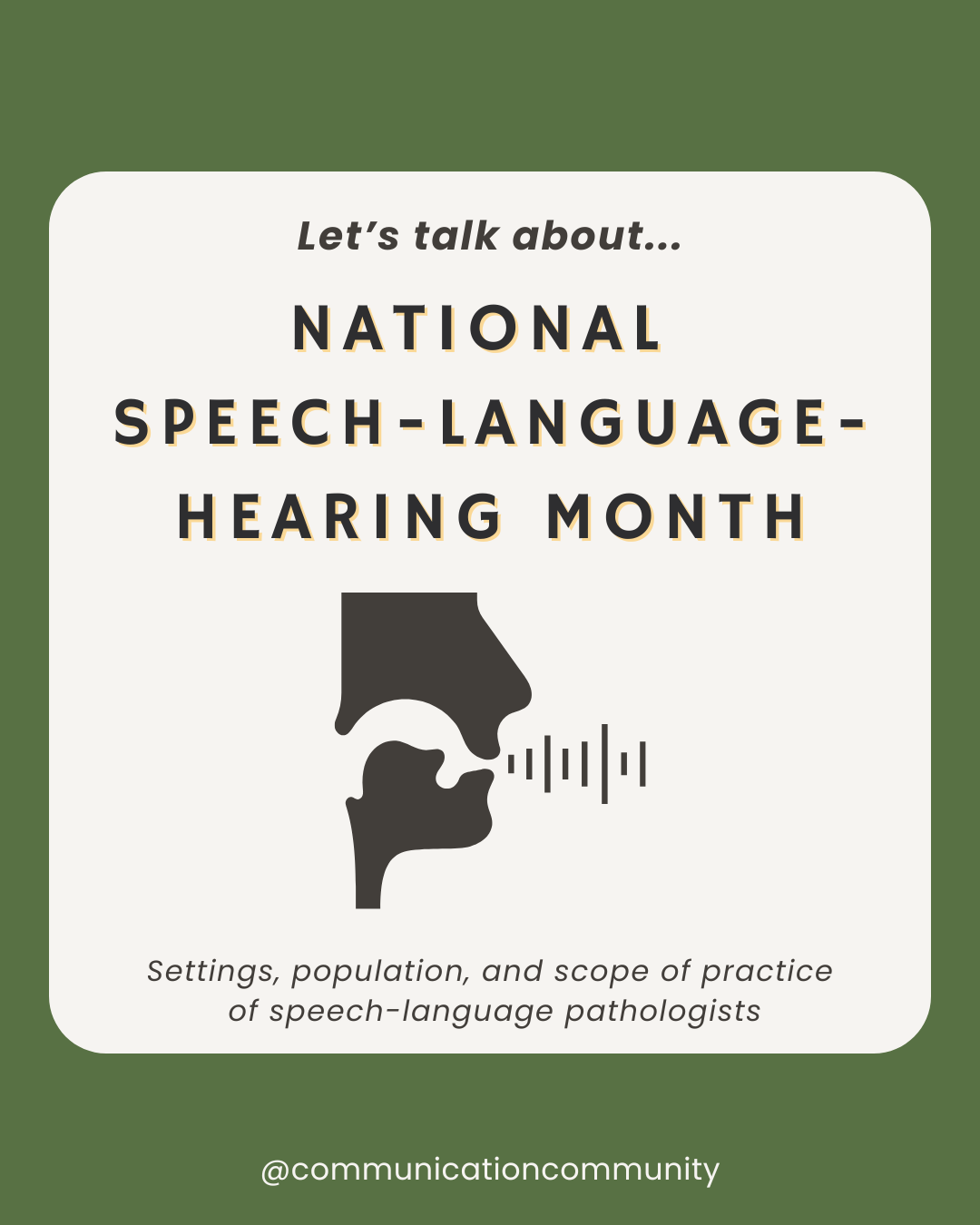
![How to Write Apraxia Goals [with goal bank]](https://www.communicationcommunity.com/content/images/2024/07/Apraxia-Goals--1-.png)
